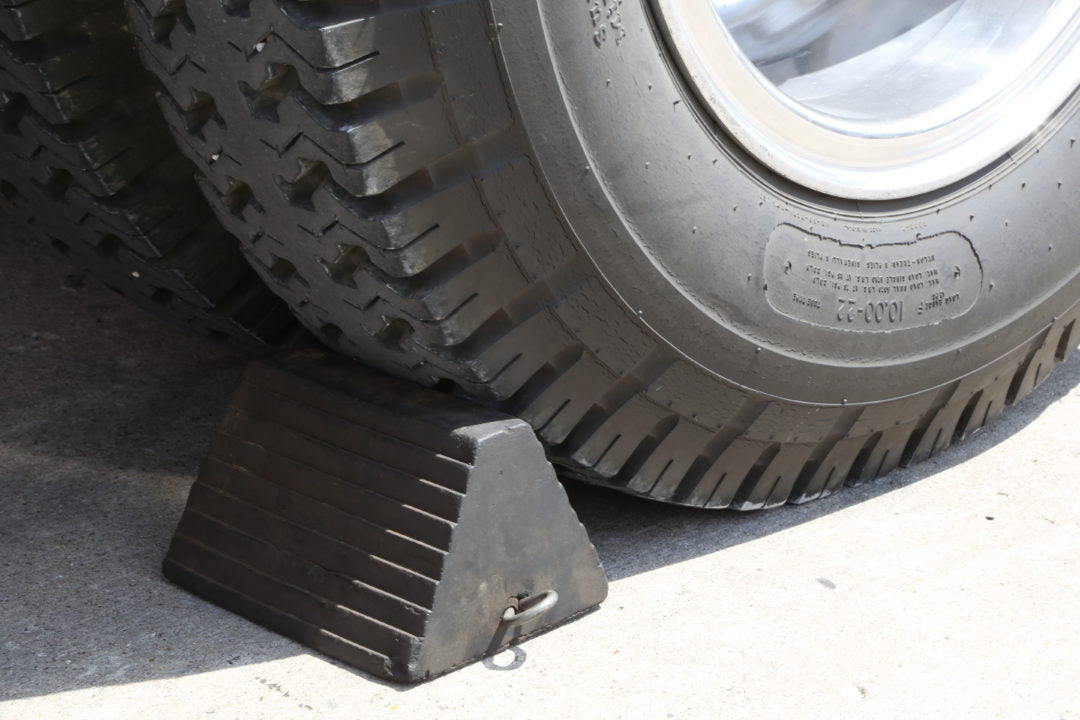
Basic Wheel Chock Use and Safety Tips
Basic Chocking
Make sure you invest in chocks specifically designed for the type of vehicle you are driving. It's especially important to pay attention to size. Never use a make-shift chock. That includes lumber, bricks, rocks or any other creative contraption you come up with on the fly. Use only proper chocks manufactured and regulated to do the job right. Make sure to keep sets of chocks in the truck or trailer, you cannot rely on the docks to always have them. That being said, it is best practice for the docks to have wheel chocks, and for that matter chocks that are chained to the dock to prevent theft or loss.
Chocking at a Dock
Upon arrival, set the brakes and activate the locking mechanism included on the dock. You’ll need to park as firmly and as closely to the dock as possible. Engage the chocks on both the left and right wheels that are closest to the loading dock. Be extremely mindful when you know a forklift will be driving in and out of the trailer from the edge of the dock. When the wheels are not chocked, or blocked, the trailer can become dislodged creating a space between the dock and the trailer. Forklift operators can get caught in that space or fall into the gap that is created. Do not drive a forklift into a trailer until you are sure the wheels are properly and safely chocked.
Chocking a Free Standing Trailer
Chock both the left and right rear axle wheels. It is best practice to chock both the front and back wheels on both sides of the vehicle. Sometimes it’s even better to chock the front and back of each tire.
Acquiring Wheel Chocks
Chocks are an inexpensive way to ensure the safety of those working in and around the truck and trailer. US Cargo Control offers both pyramid and wedge styles in single of two pack quantities, some are also available in a bright orange color. Bulk quantity discounts can be made upon request.



